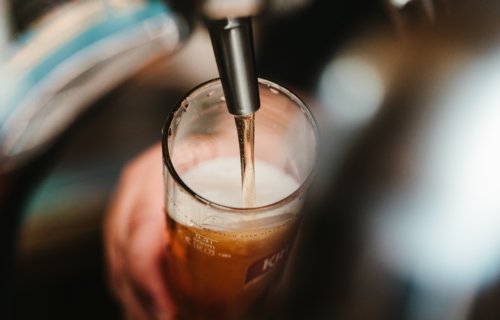WASHINGTON — Hoppy beers like pale ales have become a staple of American refrigerators in recent years. Many say they can’t resist the variety of fruity aromas such brews offer. You may be surprised to read that up until now beer makers haven’t had a suitable means of tracking the compounds in hoppy beers responsible for those pleasant smells. That may soon change, though, according to a new study by the American Chemical Society. German researchers have developed a new and improved way to measure those fragrant compounds.
The compounds in hoppy beers mostly responsible for those distinct smells are called thiols. While there are some pre-existing ways to measure thiols in a batch of beer, all of those earlier strategies have proven inaccurate, tedious, and in some cases dangerous. Luckily, this newly developed approach is an automated process that doesn’t include any potentially harmful solvents.
It doesn’t take a whole lot of thiols to produce some pleasant smells and hoppy tastes in a batch of beer. In fact, researchers say most beers contain a very small amount. Unfortunately, that’s also part of why beer makers have faced such a problem in this area for so long. Most hoppy beers contain such low concentrations of thiols that it’s hard to even measure how many are present.
Earlier strategies and efforts to measure thiol levels have relied on convoluted, multi-step approaches, with a few even instructing brewers to mix harmful mercury-laced compounds into their beer. As if all that isn’t bad enough, these strategies rarely do a good job of accurately gauging thiol levels.
Thiols are also responsible for a number of aromas associated with wines. While one method involving coated polymers has proven useful in the measurement of wine thiols, this approach isn’t as successful when it comes to beer.
Finding the fragrance of hoppy beers
So, a team led by German scientist Nils Rettberg set out to develop a better way to measure thiols in hoppy beers. Their mission was an ambitious one, as they hoped to create an approach that is safer, more accurate, and as fast as possible.
First, they made some adjustments and modifications to the wine-thiol approach. This allowed for the conversion of aerosolized thiols into compounds which are more measurable by the team. Then, a customized tandem mass spectrometry approach was used to “maximally detect and measure” thiols.
Researchers tested this new approach on 13 different commercially available beer varieties for sale in numerous countries. Study authors say all 13 tested beers were expected to have high thiol content. The thiols subsequently detected in the beers proved to be accurate.
Notably, researchers could only detect one of three expected thiols in a beer when they added a grapefruit. This suggests the grapefruit itself added more smells and aromas. Study authors say their new method is capable of accurately detecting beer thiols in a fast, safe, and efficient manner.
The study is published in Journal of Agricultural and Food Chemistry. You may be interested in reading about the top light beers, according to experts.
